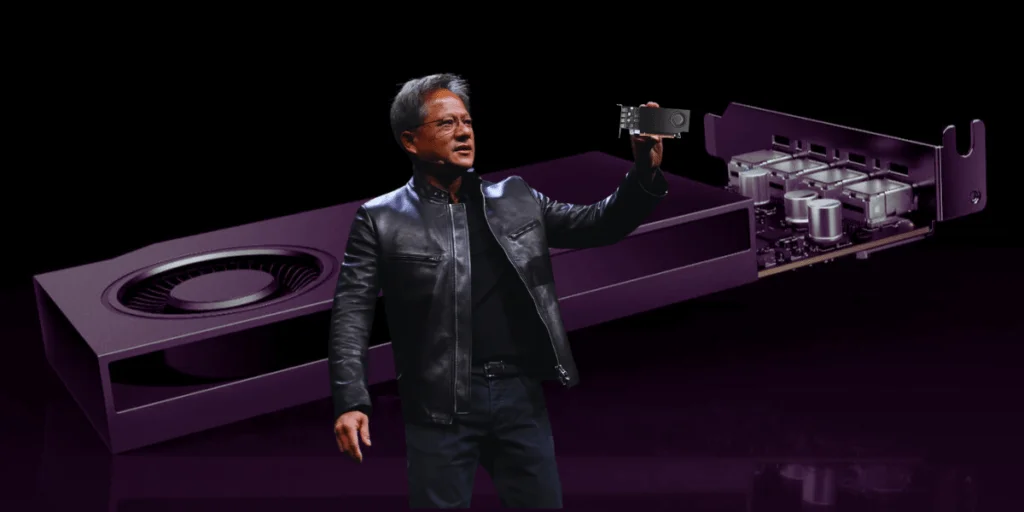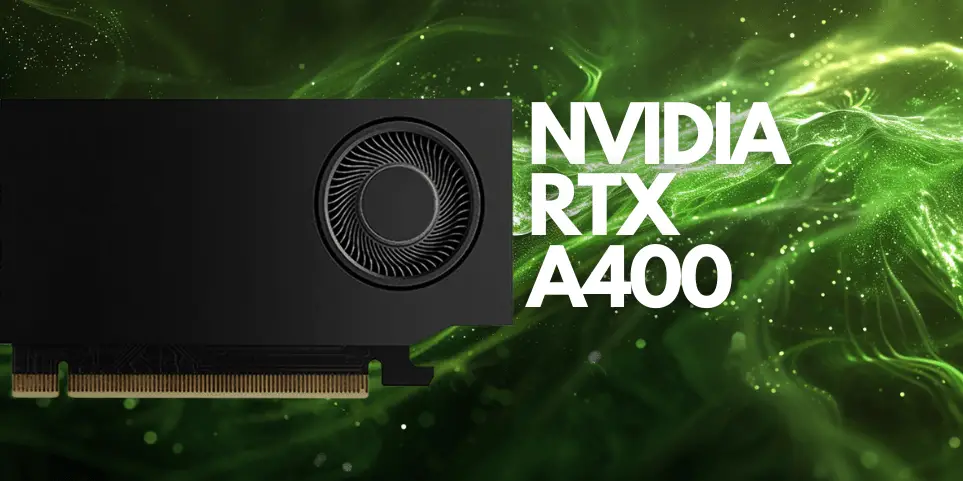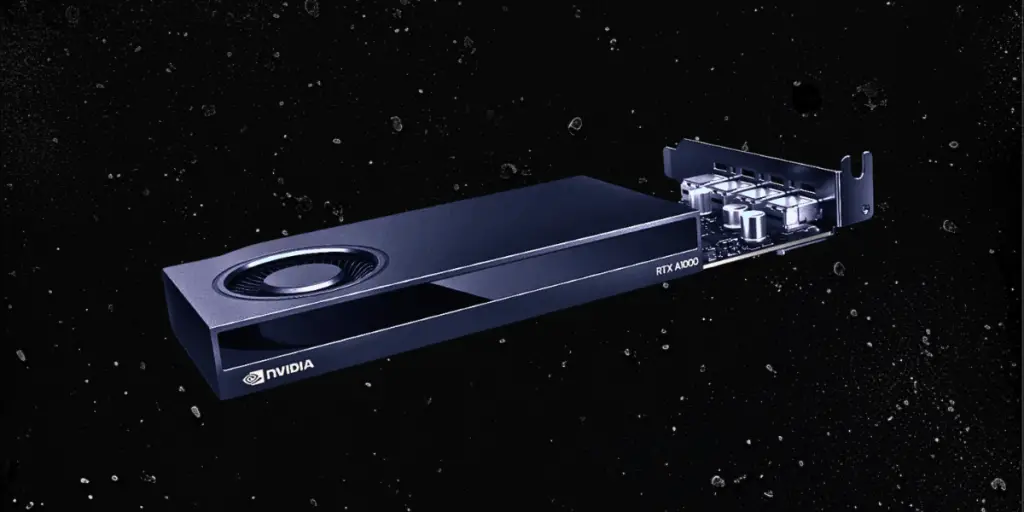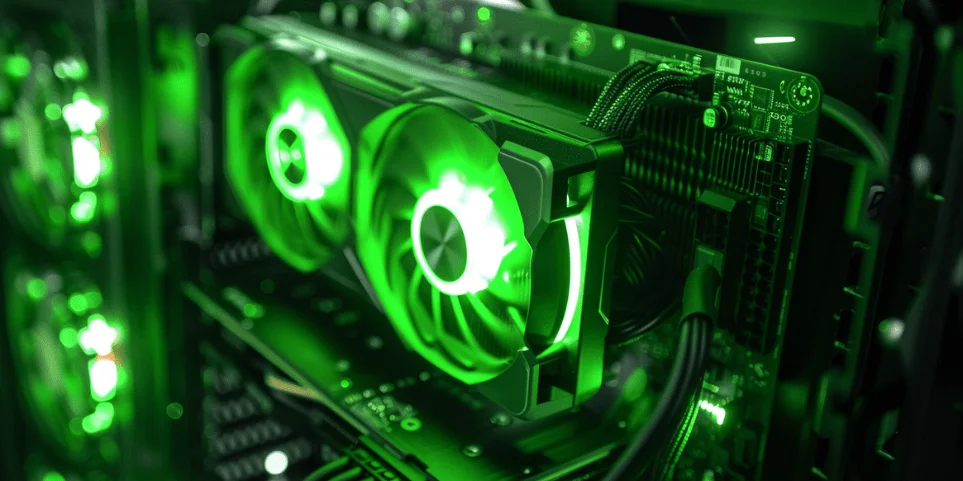Demand for more robust computing solutions is surging in an era where artificial intelligence is reshaping how we approach design and productivity.
As professionals across industries seek to leverage AI-enhanced tools to elevate their work, NVIDIA is at the forefront, introducing NVIDIA’s New GPU’s latest innovations RTX A400 and A1000 GPUs.
It comes with cutting-edge NVIDIA Ampere architecture, also these GPUs have AI capabilities and deliver real-time ray tracing to desktop workstations.
NVIDIA’s New GPUs
Both models are built upon the innovative NVIDIA Ampere architecture, renowned for its superior efficiency and power.
NVIDIA’s Ampere architecture is at the heart of both GPUs, which offers substantial improvements over its predecessors, including increased tensor core efficiency and enhanced ray tracing capabilities.
The RTX A400 and A1000 are equipped with Tensor Cores designed to accelerate AI processes. These cores allow faster and more efficient handling of AI algorithms, crucial for applications like machine learning and AI-augmented design tools.
Both GPUs feature RT Cores that facilitate real-time ray tracing. This technology simulates the physical behaviour of light to bring real-time, cinematic-quality rendering to visually intensive tasks such as 3D rendering, virtual prototyping, and special effects creation.

The GPUs are optimized for a wide range of professional applications. This includes CAD software, 3D rendering programs, and other graphic-intensive applications. That benefit significantly from the GPUs’ enhanced graphical and computational capabilities.
Despite their robust features, the RTX A400 and A1000 balance performance and energy efficiency. This design consideration ensures they fit seamlessly into various workspaces without excessive power demands.
NVIDIA RTX A400
It introduces accelerated ray tracing and AI capabilities, it may set a new standard for desktop GPUs in various professional settings. The RTX A400 also brings real-time ray tracing to the RTX 400 series for the first time.
This technology creates highly detailed and physically accurate 3D renders, enhancing realism in visualizations and simulations across architecture, entertainment, and product design industries. With 24 Tensor Cores, the RTX A400 is specially equipped to handle AI-driven tasks efficiently.
This includes operating AI applications directly on the desktop, such as intelligent chatbots, virtual assistants, and advanced image processing tools. A standout feature of the RTX A400 is its ability to support up to four display outputs natively.
This capability is crucial for industries that rely on multi-display setups, such as financial trading, command and control centers, and digital signage applications. With supporting multiple 4K displays, the RTX A400 enhances productivity and provides expansive digital workspaces.
The A400 supports advanced features and delivers them with remarkable efficiency. It is designed to surpass traditional CPU-based solutions in speed and performance, enabling quicker execution of complex rendering and AI tasks.
The RTX A400’s ability to drive multiple high-resolution displays simultaneously allows financial professionals to monitor markets, analyze data, and manage transactions more effectively, all within an optimized workspace.
In environments where real-time data visualization and situational awareness are critical, such as emergency response centers, the RTX A400 provides the necessary graphical horsepower to handle multiple inputs and outputs smoothly.

The RTX A400 facilitates high-quality, dynamic content management across multiple screens for sectors that utilize digital displays extensively, improving information dissemination and advertising impact.
Creative professionals, including graphic designers, animators, and video producers, benefit from the A400’s enhanced rendering capabilities, which allow for faster iteration and more complex scene handling without compromising.
NVIDIA RTX A1000
The NVIDIA RTX A1000 GPU is a robust addition to the RTX 1000 series, designed to meet the needs of professionals requiring advanced AI and ray-tracing capabilities.
This GPU is tailored for creatives and technical professionals, providing significant upgrades in performance and efficiency compared to its predecessors.
The A1000 is equipped with 72 Tensor Cores, which substantially boosts AI processing power. This enhancement is critical for generative AI applications, such as Stable Diffusion, which offers more than three times the performance of previous generations.
With 18 RT Cores, the A1000 significantly enhances ray-tracing performance, accelerating tasks that involve complex lighting and shadow simulations.
This upgrade is essential for professionals in 3D modeling, architectural visualization, and high-end visual effects, providing up to three times faster rendering capabilities.
The A1000 excels in video encoding and decoding, supporting up to 38% more encode streams and offering double the decode performance of earlier models.
This makes it ideal for video editing, streaming, and playback, particularly in 4K, enhancing film production and live broadcasting workflows.
Despite its powerful features, the A1000 maintains a single-slot design and consumes just 50 watts. This energy efficiency makes it suitable for compact yet powerful workstation setups, particularly beneficial in space-constrained environments.
Professionals using CAD for product design, architectural projects, and engineering simulations will find the A1000’s accelerated performance transformative. It enables more complex and detailed designs without compromising speed.
The enhanced encode and decode capabilities make the A1000 a powerhouse for video editors and content creators, allowing for smoother editing and playback of high-resolution video, thus streamlining post-production processes.
The GPU’s advanced ray tracing and AI capabilities allow architects and designers to rapidly iterate on visual prototypes with lifelike accuracy, significantly reducing the time from concept to visualization.
In healthcare, faster and more precise imaging analysis is crucial. The A1000 facilitates this by accelerating the processing of large imaging datasets, thus aiding in quicker diagnostic evaluations.

The A1000 not only introduces new capabilities but also significantly improves upon the foundational technologies of its predecessors. This includes
- A substantial increase in tensor and ray-tracing cores, providing a leap in AI and graphics rendering performance.
- Enhanced memory capacity and bandwidth are critical for handling large datasets and complex simulations.
- Improved power efficiency ensures that the GPU delivers top-tier performance without excessive energy consumption.
Reach of RTX Technology
The RTX GPUs are equipped with powerful Tensor Cores that accelerate AI-driven applications. This enables professionals to incorporate complex AI algorithms into their workflows, enhancing data analysis, generative design, and automated decision-making capabilities.
With the inclusion of RT Cores, the RTX GPUs offer real-time ray tracing that significantly enhances visual fidelity.
This is particularly transformative for industries that rely on visual accuracy and detail, such as animation, film production, and architectural visualization, where lighting and shadow realism are critical.
The computational power of the RTX GPUs allows for faster processing times and more efficient handling of large datasets and complex simulations.
This increase in productivity is crucial for fields such as engineering, scientific research, and content creation, where time and accuracy are paramount.
Filmmakers, animators, and graphic designers can produce richer visual content with enhanced detail and realism, pushing the boundaries of storytelling and visual communication.
RTX technology aids in the faster processing of medical imaging, leading to quicker, more accurate diagnostic capabilities, which are vital for patient care and medical research.
Supporting multiple high-resolution displays allows financial analysts and traders to manage complex datasets more effectively, enhancing decision-making processes.
In academic settings, RTX technology facilitates advanced physics, chemistry, and artificial intelligence research by enabling detailed simulations and data analyses.
The capabilities of RTX GPUs are expected to evolve, offering even more sophisticated tools for AI applications, 3D modeling, and real-time data processing.
Features and Performance
The RTX A400 and A1000 GPUs are equipped with second-generation RT Cores, providing real-time ray tracing capabilities.
This allows for photorealistic rendering and visualization, which is crucial for professions that rely on accurate lighting and shadow simulations, such as architectural drafting and 3D design.
The improved RT Cores deliver faster and more efficient ray tracing, enhancing the quality and speed of rendering processes.
The introduction of third-generation Tensor Cores marks a significant enhancement in AI processing. These cores accelerate AI-augmented tools and applications, including generative AI, image rendering denoising, and deep learning super sampling.
This results in improved image generation speeds and higher quality outputs, essential for AI-driven creative and analytical tasks.
With up to twice the single-precision floating-point throughput of the previous generation, the Ampere architecture-based CUDA cores provide substantial speedups in graphics and compute workloads.
This improvement is vital for complex simulations, heavy computational tasks, and advanced graphical rendering, enabling professionals to handle more demanding projects more efficiently.
The RTX A400 and A1000 GPUs have increased GPU memory options—4GB and 8GB, respectively—and greater memory bandwidth.

This upgrade supports more extensive and complex datasets, smoother handling of large scenes in 3D modeling, and faster processing in high-resolution video editing and data analyses.
Featuring seventh-generation encode and fifth-generation decode (NVDEC) engines, these GPUs offer superior video processing capabilities.
This includes support for the latest video codecs like AV1, enabling higher efficiency and smoother playback of various video formats.
The enhanced video processing features are particularly beneficial for media professionals who require ultra-low latency and high-resolution video editing, streaming, and playback.
It can achieve more realistic visualizations with shorter rendering times, enabling quicker client approvals and iterative design processes.
Benefit from enhanced encoding and decoding capabilities, which streamline post-production workflows and support real-time 4K streaming.
Market Availability
This GPU is already available on the market, offering immediate access for professionals and enterprises. It can be purchased through global distribution partners, including notable names like PNY and Ryoyo Electric. This ensures a broad reach and easy accessibility for various industries worldwide.
Scheduled for a staggered release, the RTX A400 is expected to be available from channel partners starting in May, with broader availability from manufacturers projected for the summer. This phased rollout helps meet the anticipated high demand and allows NVIDIA to manage supply effectively.
NVIDIA has positioned these GPUs to cater to a wide range of professionals by offering different configurations and price points, accommodating everything from individual creatives to large-scale industrial applications.
This strategic pricing ensures smaller studios and independent professionals can access cutting-edge technology. At the same time, larger organizations can deploy these GPUs at scale.
This could push competitors to enhance their offerings, leading to a rapid advancement in overall technology available in the market.
With more accessible and powerful GPUs, software developers will likely design more sophisticated applications that can leverage this increased power, particularly in AI, 3D modeling, and large-scale data processing.
This could lead to innovations in software capabilities, including more intuitive AI integrations and complex simulations.
Final Thoughts
Built on the robust Ampere architecture, these GPUs deliver unprecedented performance levels, particularly in AI acceleration and real-time ray tracing, setting new benchmarks in the industry.
The RTX A400 and A1000 GPUs are engineered to meet the diverse needs of various professionals, from architects and designers to content creators and data scientists, enabling them to tackle more complex projects with incredible speed and accuracy.
The ability of these GPUs to support multiple high-resolution displays and manage large datasets with enhanced memory capacity and bandwidth illustrates NVIDIA’s commitment.
These GPUs’ strategic market availability and pricing ensure cutting-edge technology is accessible to a broad spectrum of users, from large corporations to individual freelancers.
This democratization of technology fosters a competitive market landscape and encourages continuous innovation across software and hardware sectors.
The implications of these GPUs extend beyond immediate technological enhancements. They are set to influence future trends in AI, machine learning, and environmental sustainability within the tech industry.
As these GPUs become integral to professional and creative workflows, they will undoubtedly spur further advancements, driving the tech industry forward in exciting and transformative ways.


